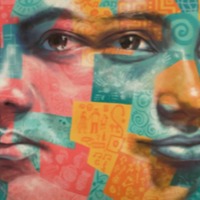
Rajita T
There are an estimated 171,000 people living in modern slavery in Nepal (GSI 2018). Within Nepal, bonded labour exists in agriculture, brick kilns, the stone-breaking industry, and domestic work. Sex trafficking of Nepali women and girls increasingly takes place in private apartments, rented rooms, guest houses, and restaurants. Nepali and Indian children are subjected to forced labor in the country, especially in domestic work, brick kilns, and the embroidered textile, or zari, industry. Under false promises of education and work opportunities, Nepali parents give their children to brokers who instead take them to frequently unregistered children’s homes in urban locations, where they are forced to pretend to be orphans to garner donations from tourists and volunteers; some of the children are also forced to beg on the street. According to Human Rights Watch, thirty-seven percent of girls in Nepal marry before age 18 and 10 percent are married by age 15, in spite of the fact that the minimum age of marriage under Nepali law is 20 years of age. UNICEF data indicates that Nepal has the third highest rate of child marriage in Asia, after Bangladesh and India.Rajita T. was married when she was 12 or 13 to her husband who was about 18 years old
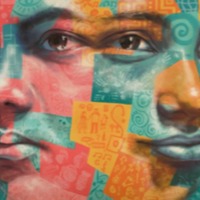
Rajita Atri
There are an estimated 171,000 people living in modern slavery in Nepal. Within Nepal, bonded labour exists in agriculture, brick kilns, the stone-breaking industry, and domestic work. Sex trafficking of Nepali women and girls increasingly takes place in private apartments, rented rooms, guest houses, and restaurants. Nepali and Indian children are subjected to forced labor in the country, especially in domestic work, brick kilns, and the embroidered textile, or zari, industry. Under false promises of education and work opportunities, Nepali parents give their children to brokers who instead take them to frequently unregistered children’s homes in urban locations, where they are forced to pretend to be orphans to garner donations from tourists and volunteers; some of the children are also forced to beg on the street. According to Human Rights Watch, thirty-seven percent of girls in Nepal marry before age 18 and 10 percent are married by age 15, in spite of the fact that the minimum age of marriage under Nepali law is 20 years of age. UNICEF data indicates that Nepal has the third highest rate of child marriage in Asia, after Bangladesh and India.Rajitra was forced to marry at a young age, causing complications with her pregnancies.
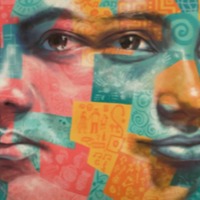
Narendra Chamar
There are an estimated 171,000 people living in modern slavery in Nepal (GSI 2018). Within Nepal, bonded labour exists in agriculture, brick kilns, the stone-breaking industry, and domestic work. Sex trafficking of Nepali women and girls increasingly takes place in private apartments, rented rooms, guest houses, and restaurants. Nepali and Indian children are subjected to forced labor in the country, especially in domestic work, brick kilns, and the embroidered textile, or zari, industry. Under false promises of education and work opportunities, Nepali parents give their children to brokers who instead take them to frequently unregistered children’s homes in urban locations, where they are forced to pretend to be orphans to garner donations from tourists and volunteers; some of the children are also forced to beg on the street. According to Human Rights Watch, thirty-seven percent of girls in Nepal marry before age 18 and 10 percent are married by age 15, in spite of the fact that the minimum age of marriage under Nepali law is 20 years of age. UNICEF data indicates that Nepal has the third highest rate of child marriage in Asia, after Bangladesh and India. Narendra was one and half years old at the time of his wedding and his wife was six months old. When he was 16, his bride came to live with him and they met for the first time since the wedding.

My Future Is My Choice
My Future Is My Choice provides a lesson plan and resources for teaching on forced marriage, child marriage and honour-based violence and the possible long-term consequences of these crimes. We approach this subject sensitively and gently beginning with a powerful true narrative in which child marriage is fortunately prevented. The theme is introduced through artwork, and as the content progresses students learn that this crime is closely tied to control, violence and exploitation. There are two 55-minute lessons, depending on the level of your students and is aimed at older teens, young adults, adults, B1+ (upper intermediate to advanced)Materials include Laila’s story, student worksheet, autonomous learning resources, audio recording and transcript, Shahina’s story: transcript of video narrative, information about human trafficking and modern slavery, slides, Teacher’s Guide.Audio for this lesson plan can be found at https://youtu.be/JkGirIiPGfg
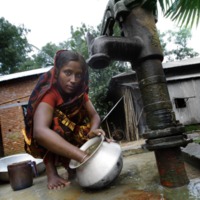
Sadia
There are an estimated 592,000 people living in modern slavery in Bangladesh (GSI 2018). According to UNICEF, Bangladesh has the fourth highest prevalence rate of child marriage in the world, and the second highest number of absolute child brides – 4,451,000. In 2017 59% of girls in Bangladesh were married before their 18th birthday and 22% were married before the age of 15.
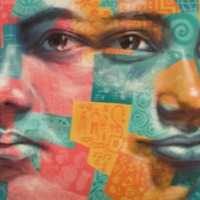
Anessa
There are an estimated 592,000 people living in modern slavery in Bangladesh (GSI 2018). Men, women and children are subjected to forced labour and sex trafficking. Bangladesh is host to more than 1 million undocumented Rohingya, including hundreds of thousands who fled Burma in previous decades. The Rohingya community’s stateless status and inability to work legally increases their vulnerability to human trafficking. Rohingya women and girls are reportedly recruited from refugee camps for domestic work and are instead subjected to sex trafficking. Within the country, Bangladeshi children and adults are subjected to sex trafficking, domestic servitude, and forced and bonded labor, in which traffickers exploit an initial debt assumed by a worker as part of the employment terms. Anessa was 13 years old when she married her 50 year old employer Samad. Once married, Samad told Anessa that she would go work abroad. A job was found for Samad in Kuwait, where upon arrival, she was told she would engage in sex work. Samad sent what money she received back to her husband, however upon returning to Bangladesh found out that her husband had divorced her.
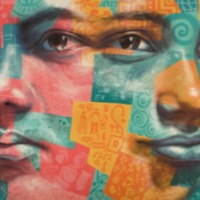
Esther Choe
The Democratic People’s Republic of Korea (North Korea) is a source country for men, women and children who are subjected to forced labour and sex trafficking. Government oppression in the DPRK prompts many North Koreans to flee the country in ways that make them vulnerable to human trafficking in destination countries. Many of the estimated 10 000 North Korean women and girls who have migrated illegally to China to flee abuse and human rights violation are particularly vulnerable to trafficking. Some lure, drug, detain or kidnap North Korean women on their arrival, others offer jobs but subsequently force the women into prostitution, domestic service, or forced marriage. If found, Chinese authorities often repatriate victims back to the DPRK where they are subjected to harsh punishment including forced labour in labour camps or death. Esther Choe left her family behind in North Korea to seek out work in China after arranging passage with a handler. But dreams of making extra income to help feed her loved ones were shattered when she realized that she had been sold into marriage across the border by a human trafficker. On April 18, 2013 she testified before the global human rights subcommittee in the U.S. House of Representatives, saying that ‘countless North Korean refugee women’ had been through similar experiences and worse
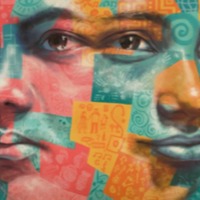
Noor B
Despite signs of progress, Bangladesh continues to have one of the highest child marriage rates in the world.66% of girls in Bangladesh are married under 18 with the average age of marriage for girls in the country being 15. As well as deeply embedded cultural beliefs, poverty, is also a driving factor for child marriage, with parents’ seeking to obtain economic and social security for their daughter. Dowry also continues to be a driving factor, with prices often increasing the older a girl gets. Noor B was forced to get married at the age of 11 to a husband who did not work and was physically abusive. To support her four children, Noor started her own business selling clothes. She tells of how this has allowed her daughters to get an education rather than being forced in to child marriage, but that once they start working she will choose husbands for them.
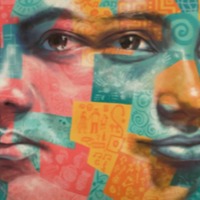
Ruhana M
Despite signs of progress, Bangladesh continues to have one of the highest child marriage rates in the world.66% of girls in Bangladesh are married under 18 with the average age of marriage for girls in the country being 15. As well as deeply embedded cultural beliefs, poverty, is also a driving factor for child marriage, with parents’ seeking to obtain economic and social security for their daughter. Dowry also continues to be a driving factor, with prices often increasing the older a girl gets. Ruhana M. was 10 when she was sent to live in Dhaka with her stepsister who works at a garment factory. Ruhana was told that she would be cared for and sent to school, however upon arrival she was forced to cook and clean in the home. When Ruhana began menstruating at age 12, her stepsister forced her to marry a man she did not know. Ruhana now has a six-year-old daughter. She does day labor as a road worker to pay for her daughter to go to school.
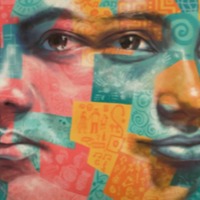
Azima B
Despite signs of progress, Bangladesh continues to have one of the highest child marriage rates in the world.66% of girls in Bangladesh are married under 18 with the average age of marriage for girls in the country being 15. As well as deeply embedded cultural beliefs, poverty, is also a driving factor for child marriage, with parents’ seeking to obtain economic and social security for their daughter. Dowry also continues to be a driving factor, with prices often increasing the older a girl gets. Despite wanting to continue on with her education, Azima B was forced to marry as her parents feared river erosion would cause their house to be swept away and make it harder for her to be married later on.
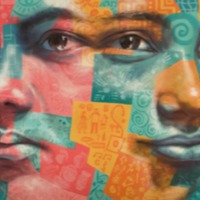
Nargis
Despite signs of progress, Bangladesh continues to have one of the highest child marriage rates in the world.66% of girls in Bangladesh are married under 18 with the average age of marriage for girls in the country being 15. As well as deeply embedded cultural beliefs, poverty, is also a driving factor for child marriage, with parents’ seeking to obtain economic and social security for their daughter. Dowry also continues to be a driving factor, with prices often increasing the older a girls gets. Nargis was 14 when she was forced to marry a man she didn’t know almost twice her age in an attempt to escape poverty.
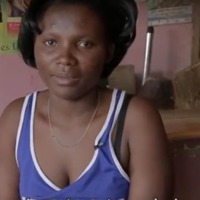
Janet B
Uganda remains a source, transit and destination country for men, women and children subjected to forced labour and sex trafficking. Ugandan children as young as seven are exploited in forced labour in agriculture, fishing, forestry, cattle herding, mining, carpentry, bars, restaurants and domestic service. Girls and boys are also exploited in prostitution, with recruiters targetting girls and women between the ages of 13 and 24 for domestic sex trafficking. 54,000 girls under 18 are sex workers in Uganda. Lured by false promises of education and good jobs. Others are escaping poverty, sexual abuse and child marriage. Janet was 15 when she was forced to marry a man who was 36 years old. Her husband infected Janet with HIV and, ostracised by her family, she ran away to Kampala city. Upon arriving in Kampala, Janet was forced to undertake sex work in order to survive. With the help of Plan International, Janet was able to escape sex work and train to become a hairdresser.
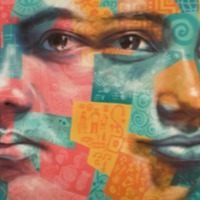
Bhagyalakshmi
India has a population of more than 1.3 billion people, there are still at least 270 million people living on less than US$1.90 per day. While laws, systems and attitudes regarding key 'fault lines' such as the caste system, gender and feudalism are rapidly changing, social change of this depth and scale necessarily takes time. In this context, it is perhaps unsurprising that existing research suggests that all forms of modern slavery continue to exist in India, including intergenerational bonded labour, forced child labour, commercial sexual exploitation, forced begging, forced recruitment into nonstate armed groups and forced marriage.While bonded labour has been outlawed for decades, survey data and pre-existing research confirms that this practice still persists. Bonded labour is not only illegal, research confirms that it has serious negative health impacts for those affected, who typically work in unsanitary and dangerous working conditions with no access to health care. Bhagyalakshmi tells of how she was forced to leave her studies when her mother became ill and her father had to borrow money to pay for an operation. Bhagyalakshmi was forced to work in a mill in order to help pay off the debt, working 10 hours a day with little rest. After working for 2 years Bhagyalakshmi was married and thought her life would get better. However, her husband was also poor and slowly became an alcoholic, leaving her to carry out all the household responsibilities and work to provide the family with an income. One day her husband became ill and Bhagyalakshmi was forced to borrow money and once again pay off her debt working at the mill, where she and other women developed health issues and were subjected to physical violence and sexual exploitation.
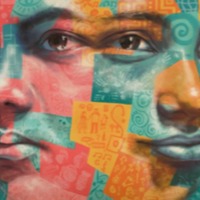
Sunita B
India has a population of more than 1.3 billion people, there are still at least 270 million people living on less than US$1.90 per day. While laws, systems and attitudes regarding key 'fault lines' such as the caste system, gender and feudalism are rapidly changing, social change of this depth and scale necessarily takes time. In this context, it is perhaps unsurprising that existing research suggests that all forms of modern slavery continue to exist in India, including intergenerational bonded labour, forced child labour, commercial sexual exploitation, forced begging, forced recruitment into nonstate armed groups and forced marriage. Sunita was 14 when she was forced to marry and move to live with her new husband. Sunita tells of her husband’s poor economic condition and how they have had to borrow money for events such as marriages and funerals. As a result, Sunita herself must work for daily wage labour and her son has had to leave school to work. However, Sunita tells of how their employers often withhold wages which means they have been unable to pay of their debts.
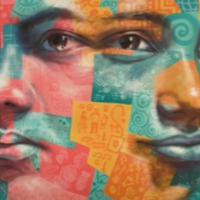
Christina A.
Romania is a significant source of sex and labor trafficking victims throughout Europe. Romanian men, women, and children are subjected to labor trafficking in agriculture, construction, domestic service, hotels, and manufacturing, as well as forced begging and theft in Romania and other European countries. Romani children are particularly vulnerable to forced begging and sex trafficking. Corruption is a prevalent issue: government officials have been convicted of human trafficking crimes, and there have been reports of local officials obstructing trafficking investigations. Married against her will at 13 and forced to steal by her husband in Spain and Belgium, Christina now lives in a youth shelter and is going to school.
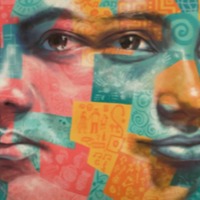
Elira
Born in Albania, Elira was trafficked into Italy, where trafficking victims also arrive from Nigeria, Romania, Bulgaria, China, and South America. One NGO estimates that 48 percent of the prostitutes in Italy are from Eastern Europe.
Many women are trafficked into richer Western European countries from the poorer Eastern countries, including Albania. The fall of communism in 1991 led to a rise in organized crime in Albania: in 2001 it was estimated 100,000 Albanian women and girls had been trafficked to Western European and other Balkan countries in the preceding ten years. More than 65 percent of Albanian sex-trafficking victims are minors at the time they are trafficked, and at least 50 percent of victims leave home under the false impression that they will be married or engaged to an Albanian or foreigner and live abroad. Another ten percent are kidnapped or forced into prostitution. The women and girls receive little or no pay for their work, and are commonly tortured if they do not comply.
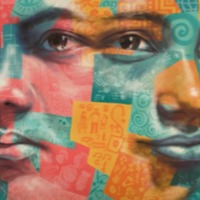
Dara
“Dara” was enslaved for sexual exploitation as a child in Cambodia. Here she discusses her enslavement and the psychological impact that this has had on her, explaining the difficulty of reintegrating into society after her enslavement, and that she feels “finished” and “dead.” She also talks about her work as a volunteer helping other survivors of slavery to train and take control over their lives. Despite significant attempts to curb the commercial sexual exploitation that Cambodia became famous for in the 1990s, NGOs report the industry has been pushed underground and sex offenders are still able to purchase sex with children through an intermediary rather than more overt selling of sex in brothels.